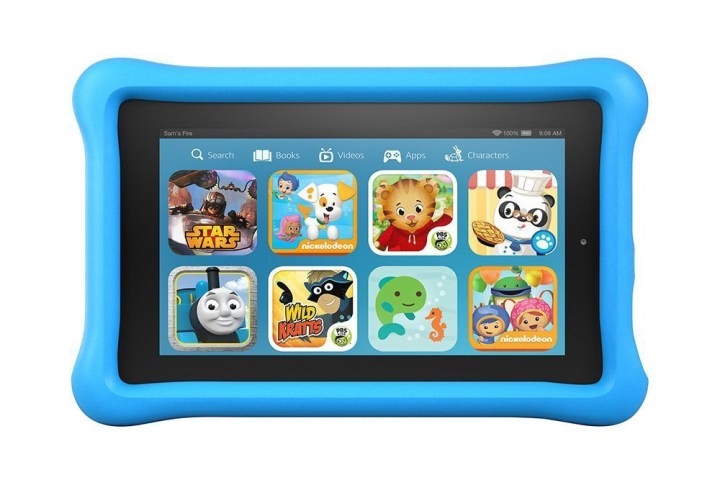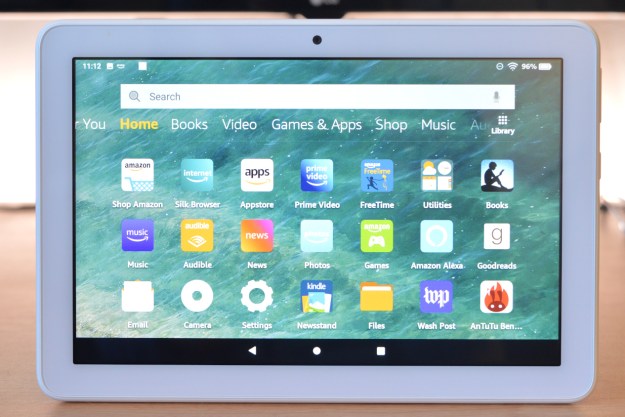
Amazon’s launching Parent Dashboard, a new way for parents to keep tabs on their children’s digital activity. Parents who have enrolled kids in FreeTime can see a breakdown of apps they’ve used, websites they’ve visited, and books they’ve read over the past 90 days. They can pull up a graphical view of the past week’s activity, and scroll through content in chronological list form.
Parent Dashboard is built on Amazon’s FreeTime, a growing library of Amazon-curated content for kids on Fire tablets. An editorial team sifts through books and thousands of videos, apps, TV shows, and movies aimed at specific age ranges and approves each individually.

That’s harder than it sounds. Amazon’s editorial staff checks every web link to ensure they don’t contain harmful material, and watch YouTube videos from beginning to end. “We take a conservative approach,” Kurt Beidler, director and general manager of Amazon FreeTime, told Digital Trends.
The new Parents Dashboard is similarly streamlined. When parents log in via parents.amazon.com, they’ll get a detailed overview of their kids’ usage habits by day and category. A bar graph compares the percentage time they’ve spent reading versus, say, the hours they’ve spent in a game. And Dashboard lets them drill down by section — tapping on Books, for example, pulls up a list of every title their kid has read, along with the amount of time they’ve spent reading each one.
Parents Dashboard marks the introduction of a new FreeTime feature: Discussion cards. Select books and TV shows have a little chat bubble icon next to them, and tapping on it brings up a card with a “cheat sheet” of useful information. They include a plot synopsis, discussion questions for parents to pose to their kids, and related activities parents and kids can do together.
“It’s a refresher for parents,” Beidler said. “It’s not just fact-based stuff.”
Some of those summaries come from Common Sense Media, a nonprofit organization that reviews books, movies, and other media for age-appropriateness, and others come from Amazon’s team. Beidler said that going forward, new titles added to FreeTime will get discussion cards.

In that sense, Parent Dashboard’s less about monitoring activity than fostering engagement. “It helps parents [connect] with kids,” Beidler said. “They can share in what their kids are doing.”
Seeing a detailed breakdown of a kids’ digital data is a little unnerving, especially given Amazon’s bread-and-butter business: Selling products. But Beidler said that Parent Dashboard and FreeTime are fully compliant with the Children’s Online Privacy Protection Act (COPPA), which prohibits online services and websites from collecting certain personal information on kids under 13 years of age, and stressed that any data Amazon does collect is only stored for 90 days.
“Parent trust is important,” he said. “We only store what we need to store. We’re not using it to advertise to parents — we make no attempt to upsell.”
Editors' Recommendations
- Amazon’s kid-friendly Fire HD 10 tablets bring AI-powered games
- Amazon’s new Fire HD 8 tablets run faster, last longer, and start at $100
- Jeep’s new Wagoneer will be first car with Amazon Fire TV
- Amazon’s new AR app lets you have fun with all those Prime Day boxes
- Latest Amazon Fire TV Stick down to $20 in early Prime Day Deal


